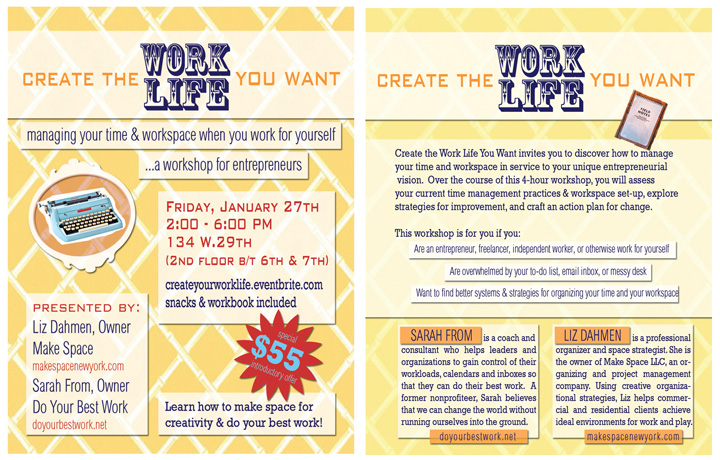Best practices gleaned from Getting Things Done, The Power of Full Engagement, 7 Habits, The Fire Starter Sessions, and my brilliant clients. 1. Identify & make space for your top priorities first. Identify your major priorities and make time for them in your schedule first. Then, make your lower priorities fit in around the big stuff. If you fill up your time with the little things, it becomes impossible to fit in the big things later.
2. Get everything out of your head and into a trusted system. As David Allen says, “Your mind is for having ideas, not holding them.” Get every nagging thought about something you have to do out of your head and onto a list or calendar.
3. If a task takes less than 2 minutes, do it now. Don’t put off a small task for later if you could get it done now in 2 minutes or less.
4. Keep a list of next actions & start every next action with a verb. Keep a list of the very next things you need to do. Each item should be as specific as possible and start with a verb. You are more likely to take action when you see “ask David about timeline for final report,” on your list than when you see something like “final report.”
5. Have a daily meeting with yourself. Once a day (preferably at the start of your day), take 15 – 20 minutes to check in with your top priorities next actions list and calendar. Identify the 3-5 things you must do today to make the day a success.
6. Review everything on your plate weekly. Take 60 - 90 minutes a week to review all of your commitments, assess the past week, and look ahead to the coming weeks. You will catch things that would otherwise slip through the cracks.
7. Use your “power hours” for your most brain-intensive work. Figure out what time of day you are most alert, sharp and energetic. Do your hardest work then & save the mindless tasks for when you’re spent.
8. Charge your electronic devices outside of the bedroom. Get your inbox out of your bed! Purchase an alarm clock if you’ve been using your phone & put your devices in the other room when you turn in for the night.
9. Create intentional time and space away from technology. This can look like: blocking your internet access when you are writing, unplugging from all technology for 24 hours once a month, not looking at your phone between work and when the kids go to sleep, or sitting and focusing on your breath for 5 minutes a day.
10. Do what you say you’re going to do. You’ll gain the trust, respect, and admiration of others – and yourself.



